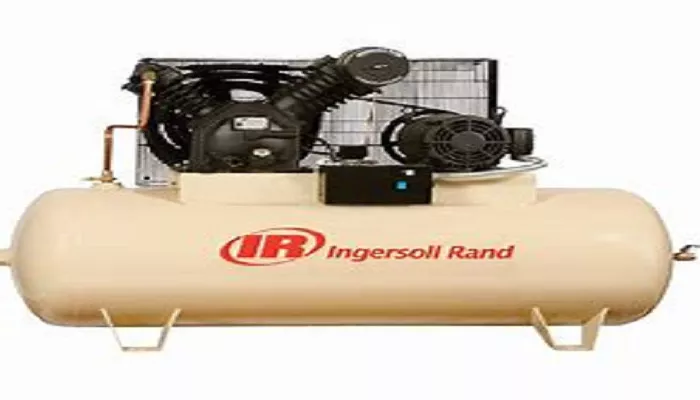When working with air compressors, one of the most critical parameters to understand is PSI (Pounds per Square Inch). PSI measures the pressure generated by the compressor and determines its ability to perform various tasks. Whether you are selecting an air compressor for industrial, automotive, or home use, understanding PSI ensures optimal performance, safety, and efficiency.
What Is PSI
Definition of PSI
PSI (Pounds per Square Inch) is a unit of pressure that measures the force exerted by air on one square inch of surface area. In air compressors, PSI indicates how much pressure the system can generate to power tools and equipment.
- 1 PSI = 1 pound of force per square inch
- Higher PSI means greater air pressure, allowing the compressor to handle more demanding tasks.
Why Is PSI Important
- Tool Compatibility: Different air tools require specific PSI levels to operate efficiently.
- Performance Efficiency: Insufficient PSI leads to poor tool performance, while excessive PSI can damage equipment.
- Safety Limits: Every compressor has a maximum PSI rating, and exceeding it can cause mechanical failure or accidents.
How PSI Affects Air Compressor Performance
Compressor Types and PSI Ranges
Different compressors operate at varying PSI levels
| Compressor Type | Typical PSI Range | Common Applications |
|---|---|---|
| Pancake Compressor | 100 – 150 PSI | Nail guns, inflating tires |
| Hot Dog Compressor | 100 – 150 PSI | Light-duty pneumatic tools |
| Twin-Stack Compressor | 125 – 175 PSI | Framing nailers, impact wrenches |
| Industrial Compressor | 150 – 200+ PSI | Sandblasting, heavy machinery |
Impact of PSI on Air Tools
Low PSI (Below Required Level)
- Tools run sluggishly or fail to operate.
- Example: A paint sprayer needs ~30-50 PSI; too low PSI causes uneven coating.
Optimal PSI (Matched to Tool Requirements)
- Ensures peak efficiency and longevity.
Excessive PSI (Above Recommended Level)
- Can damage seals, hoses, and tool mechanisms.
- Increases wear and tear on the compressor.
Duty Cycle and PSI Stability
- Continuous Duty Compressors: Maintain stable PSI for prolonged use (e.g., industrial applications).
- Intermittent Duty Compressors: PSI fluctuates as the compressor cycles on/off (common in portable units).
PSI vs. CFM: Understanding the Relationship
What Is CFM
CFM (Cubic Feet per Minute) measures the airflow volume a compressor delivers. While PSI indicates pressure, CFM determines how much air is supplied.
How PSI and CFM Work Together
High PSI + Low CFM
High pressure but insufficient airflow. Example: A tire inflator needs high PSI but low CFM.
Low PSI + High CFM
High airflow but low pressure. Example: Sandblasters require high CFM (10+ CFM) at moderate PSI (90-100).
Matching PSI & CFM to Tools
Always check both PSI and CFM requirements for air tools
| Tool | Required PSI | Required CFM |
|---|---|---|
| Impact Wrench | 90 PSI | 4-5 CFM |
| Paint Sprayer | 40-50 PSI | 5-10 CFM |
| Die Grinder | 90 PSI | 4-6 CFM |
| Sandblaster | 90-100 PSI | 10-20 CFM |
Rule of Thumb
- Choose a compressor with 20-30% higher CFM than the tool’s requirement to account for pressure drops.
Choosing the Right PSI for Different Applications
Home & DIY Use (100-150 PSI)
- Tire Inflation: 30-35 PSI (cars), 80-100 PSI (trucks).
- Nail Guns: 70-120 PSI.
- Airbrush Painting: 15-30 PSI.
Automotive & Workshop (100-175 PSI)
- Impact Wrenches: 90-120 PSI.
- Spray Guns: 40-60 PSI.
- HVAC Tools: 100-150 PSI.
Industrial & Manufacturing (150-200+ PSI)
- Pneumatic Machinery: 150+ PSI.
- Sandblasting: 90-120 PSI (high CFM critical).
- CNC Machines: 100-150 PSI.
Specialized High-Pressure Applications (200+ PSI)
- Scuba Tank Filling: 3000+ PSI (requires specialized compressors).
- Hydraulic Systems: 2000+ PSI.
Safety Considerations and Pressure Regulation
Avoiding Over-Pressurization
- Pressure Relief Valve: Essential to prevent tank explosions.
- Pressure Switch: Automatically shuts off at max PSI.
- Regular Maintenance: Check for leaks, worn seals, and pressure gauge accuracy.
Using Regulators for Optimal PSI Control
- Inline Regulators: Adjust PSI before it reaches the tool.
- Tool-Specific Regulators: Fine-tune pressure for sensitive tools (e.g., spray guns).
Common Hazards of Incorrect PSI
- Burst Hoses: Caused by exceeding rated PSI.
- Tool Damage: Over-pressurization wears out O-rings and seals.
- Reduced Efficiency: Low PSI leads to incomplete tasks.
Common Misconceptions About PSI
Higher PSI Always Means Better Performance
- Reality: Excessive PSI wastes energy and risks equipment damage.
All Air Tools Work at the Same PSI
- Reality: Each tool has specific PSI/CFM needs (check manufacturer specs).
A Bigger Tank Means Higher PSI
- Reality: Tank size affects air storage (CFM), not PSI. PSI depends on the compressor pump.
Conclusion
Understanding PSI in air compressors is crucial for selecting the right equipment, ensuring safety, and maximizing efficiency. By matching PSI and CFM to your tools’ requirements, you can avoid performance issues and extend the lifespan of your compressor.

